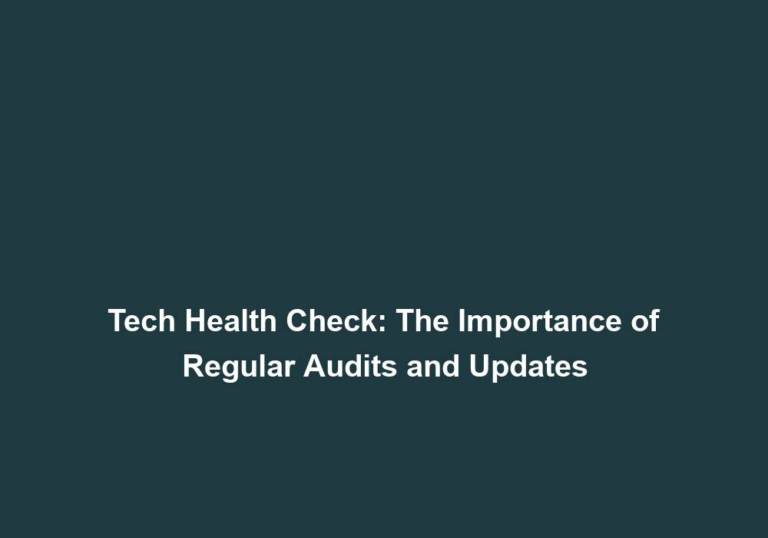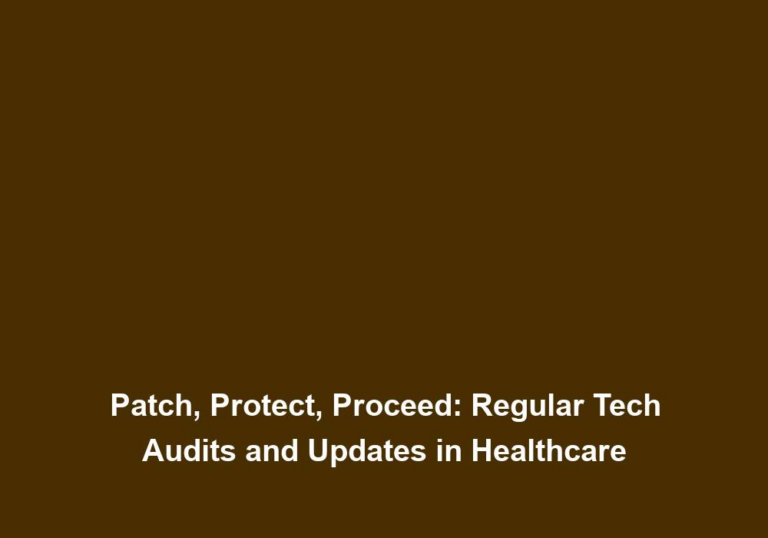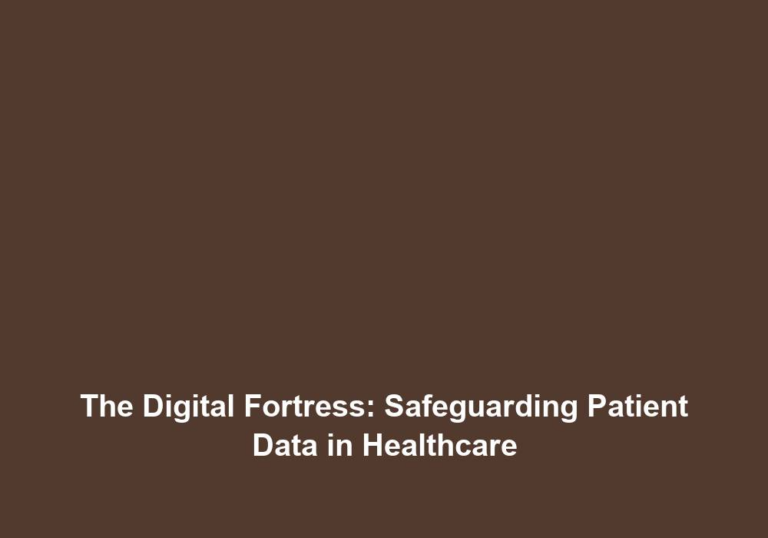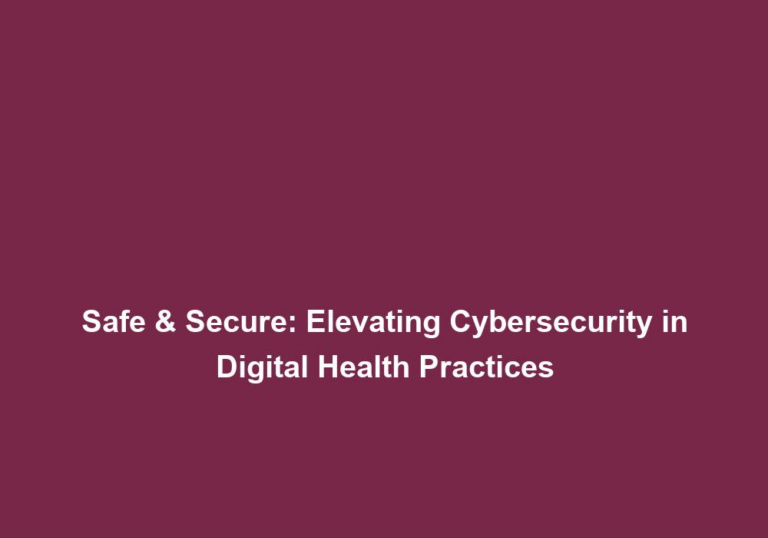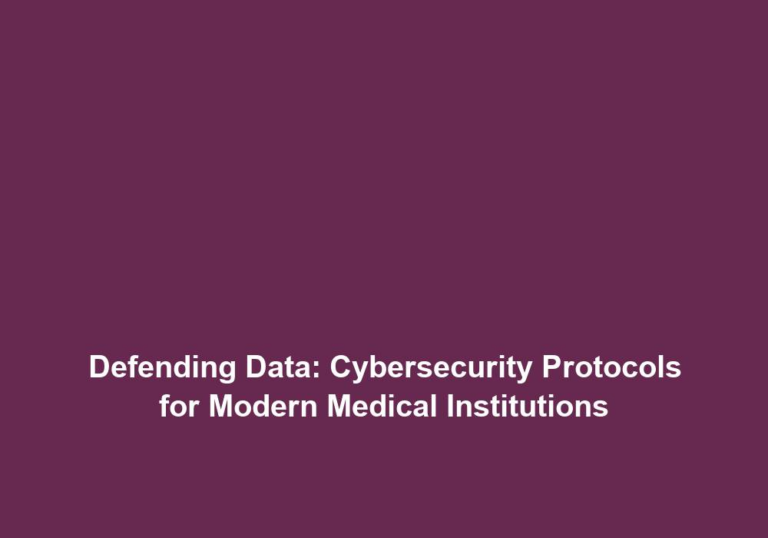Guardians of Health Data: Best Practices in Protecting Patient Information
In today’s digital age, the protection of patient health information has become an utmost priority for healthcare organizations. With the increasing use of electronic health records (EHRs) and the constant threat of cyber attacks, it is essential for healthcare providers to implement best practices in safeguarding sensitive patient data. This article aims to provide a comprehensive guide on the best practices for protecting patient information in the healthcare industry.
Importance of Protecting Patient Information
Patient health information, encompassing medical records, personal details, and treatment history, holds immense sensitivity and confidentiality. Unauthorized access, use, or disclosure of this information can result in severe consequences, including identity theft, financial fraud, and compromised patient care. Protecting patient information not only ensures compliance with legal and regulatory requirements but also builds trust and fosters a positive patient-provider relationship.
To delve deeper into the significance of protecting patient information, let’s examine some key points:
-
Patient Trust and Confidence: When healthcare organizations prioritize the protection of patient information, they demonstrate their commitment to patient privacy and security. This builds trust and confidence among patients, who are more likely to engage with healthcare providers that prioritize their privacy.
-
Legal and Regulatory Compliance: Protecting patient information is not merely a best practice, but also a legal requirement. Healthcare organizations must comply with various laws and regulations, such as the Health Insurance Portability and Accountability Act (HIPAA) and the General Data Protection Regulation (GDPR), to avoid penalties and legal consequences.
-
Prevention of Data Breaches: Data breaches can have devastating consequences for both patients and healthcare organizations. By implementing robust security measures, healthcare providers can prevent unauthorized access and protect patients from potential harm caused by data breaches.
Security Measures for Protecting Patient Information
To ensure the highest level of protection for patient information, healthcare organizations should consider implementing the following security measures:
-
Risk Assessment and Management: Conduct regular risk assessments to identify potential vulnerabilities in your information systems. This includes evaluating the security of physical and digital assets, analyzing potential threats, and implementing appropriate risk management strategies. By proactively identifying and addressing risks, healthcare providers can fortify their defenses against potential security breaches.
-
Access Control: Implement strong access controls to restrict unauthorized access to patient information. This includes the use of unique user IDs and strong passwords, multi-factor authentication, and role-based access controls to limit access to sensitive data only to authorized personnel. By adopting a “need-to-know” approach, healthcare organizations can minimize the risk of unauthorized data access.
-
Employee Training and Awareness: Training employees on the importance of patient privacy and data security is crucial for maintaining a secure environment. Regular training sessions should be conducted to ensure that employees understand their responsibilities and stay updated on emerging threats and best practices. By fostering a culture of security awareness, healthcare organizations can empower their workforce to actively contribute to data protection efforts.
-
Encryption: Encrypting patient data both at rest and in transit provides an additional layer of protection. This involves encrypting data stored on servers, laptops, and mobile devices, as well as encrypting data transmitted over networks. Encryption ensures that even if data is compromised, it remains unreadable and unusable to unauthorized individuals. Implementing robust encryption protocols is vital in safeguarding patient information.
-
Firewall and Antivirus Protection: Installing and regularly updating firewall and antivirus software is essential for detecting and preventing unauthorized access and malware attacks. These security measures act as a first line of defense against external threats and help in detecting and mitigating potential risks. Healthcare organizations should adopt a proactive approach to maintaining up-to-date security software.
-
Secure Data Backup and Recovery: Implementing regular data backup procedures is critical in ensuring that patient information is not lost in the event of a system failure or cyber-attack. Backup data should be stored in secure off-site locations, and the recovery process should be periodically tested to ensure its effectiveness. By maintaining reliable data backups, healthcare providers can minimize the impact of potential data loss incidents.
-
Incident Response and Reporting: Establishing an incident response plan is essential for efficiently and effectively responding to security incidents. This includes defining roles and responsibilities, establishing communication protocols, and implementing procedures for reporting incidents to appropriate authorities and affected individuals. By having a well-defined incident response plan in place, healthcare organizations can minimize the damage caused by security incidents and mitigate future risks.
-
Regular Audits and Monitoring: Conducting regular internal and external audits helps assess the effectiveness of security controls and identify potential vulnerabilities. Implementing real-time monitoring systems allows for early detection and response to security breaches. By consistently evaluating and monitoring security measures, healthcare organizations can proactively address any weaknesses or gaps in their data protection strategies.
-
Vendor Management: When engaging third-party vendors who have access to patient information, it is vital to ensure that they adhere to the same high standards of data protection. Conducting due diligence when selecting vendors and including contractual obligations for data security and privacy is crucial. Proper vendor management processes contribute to the overall security of patient information.
-
Physical Security Measures: Implementing physical security measures is essential to prevent unauthorized access to facilities where patient information is stored. This includes restricted access to sensitive areas, surveillance systems, visitor management protocols, and secure storage of physical documents. By combining robust physical security measures with digital safeguards, healthcare organizations can ensure comprehensive protection of patient information.
Compliance with Legal and Regulatory Requirements
In addition to implementing best practices, healthcare organizations must comply with legal and regulatory requirements governing the protection of patient information. Some important laws and regulations to consider include:
-
Health Insurance Portability and Accountability Act (HIPAA): HIPAA ensures the privacy and security of patient health information and establishes standards for electronic transactions. Compliance with HIPAA is essential for healthcare organizations operating in the United States.
-
General Data Protection Regulation (GDPR): The GDPR applies to organizations handling the personal data of European Union (EU) citizens, even if they are not based in the EU. Compliance with the GDPR is necessary for healthcare organizations that process personal data of EU citizens.
-
HITECH Act: The HITECH Act expands the security and privacy requirements of HIPAA, including breach notification requirements and increased penalties for non-compliance. Healthcare organizations in the United States must ensure compliance with the HITECH Act.
-
Federal Trade Commission (FTC) Act: The FTC Act prohibits unfair or deceptive practices and protects consumers’ personal information. Healthcare organizations should be aware of and comply with the regulations set forth by the FTC.
-
State Data Breach Notification Laws: Many states have enacted their own data breach notification laws, which require organizations to notify affected individuals and regulators in the event of a data breach. Healthcare organizations operating in specific states should familiarize themselves with these laws to ensure compliance.
It is crucial for healthcare organizations to stay up to date with the evolving legal and regulatory landscape to ensure compliance and avoid penalties.
Conclusion
Protecting patient health information is a responsibility that healthcare organizations must fulfill diligently. By implementing best practices, complying with legal and regulatory requirements, and continuously improving data protection measures, healthcare providers can create a secure environment that safeguards patient data. Engaging in regular risk assessments, training employees, implementing access controls, encrypting data, establishing incident response plans, and adhering to compliance requirements are just some of the key steps healthcare organizations can take to ensure the protection of patient information. Remember, healthcare providers are the guardians of health data, and it is their duty to preserve patient trust and privacy through robust data protection measures.


